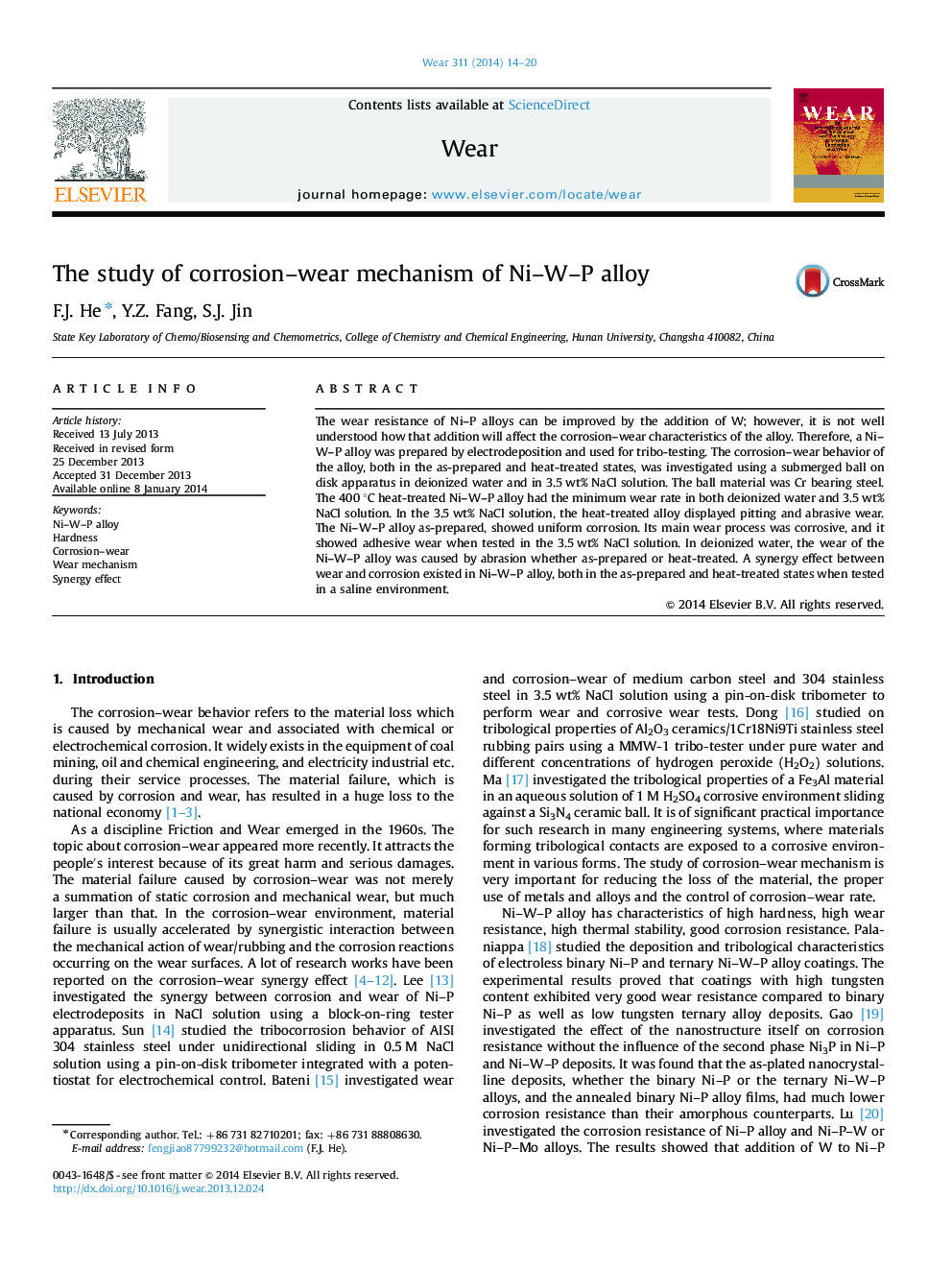| Article ID | Journal | Published Year | Pages | File Type |
|---|---|---|---|---|
| 617339 | Wear | 2014 | 7 Pages |
•Study on the corrosion–wear mechanisms of NiWP alloys in aqueous solutions.•The lowest corrosion–wear rate was achieved for NiWP alloy heat-treated at 400 °C.•In saline environment, there existed synergy effect in NiWP alloys.•The second phases of the alloy made a major influence on synergy effect.
The wear resistance of Ni–P alloys can be improved by the addition of W; however, it is not well understood how that addition will affect the corrosion–wear characteristics of the alloy. Therefore, a Ni–W–P alloy was prepared by electrodeposition and used for tribo-testing. The corrosion–wear behavior of the alloy, both in the as-prepared and heat-treated states, was investigated using a submerged ball on disk apparatus in deionized water and in 3.5 wt% NaCl solution. The ball material was Cr bearing steel. The 400 °C heat-treated Ni–W–P alloy had the minimum wear rate in both deionized water and 3.5 wt% NaCl solution. In the 3.5 wt% NaCl solution, the heat-treated alloy displayed pitting and abrasive wear. The Ni–W–P alloy as-prepared, showed uniform corrosion. Its main wear process was corrosive, and it showed adhesive wear when tested in the 3.5 wt% NaCl solution. In deionized water, the wear of the Ni–W–P alloy was caused by abrasion whether as-prepared or heat-treated. A synergy effect between wear and corrosion existed in Ni–W–P alloy, both in the as-prepared and heat-treated states when tested in a saline environment.
